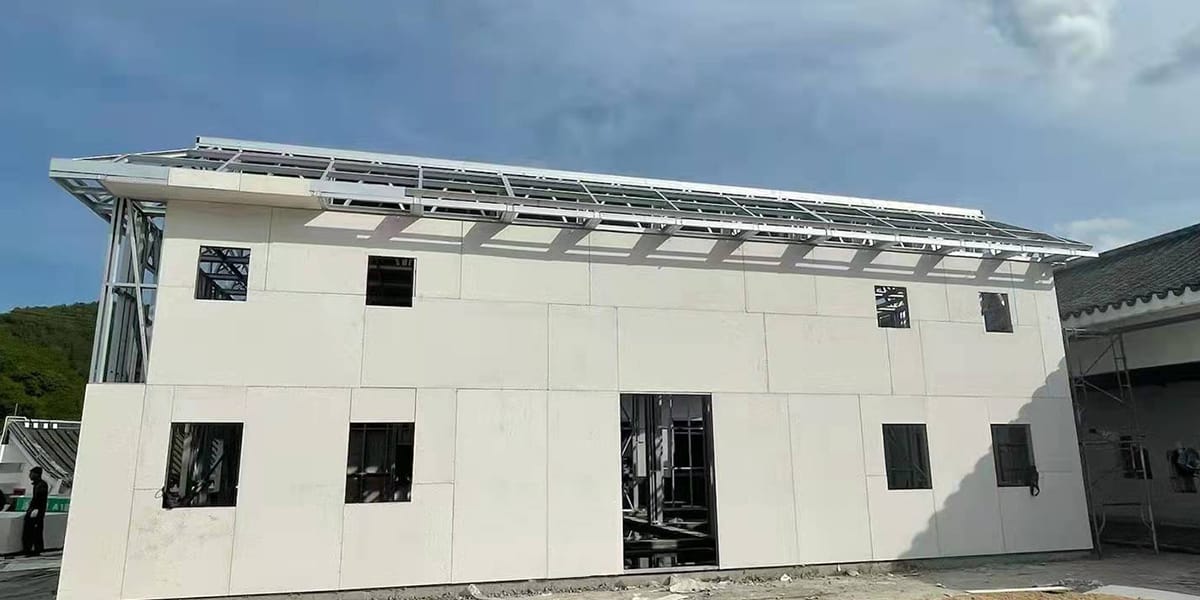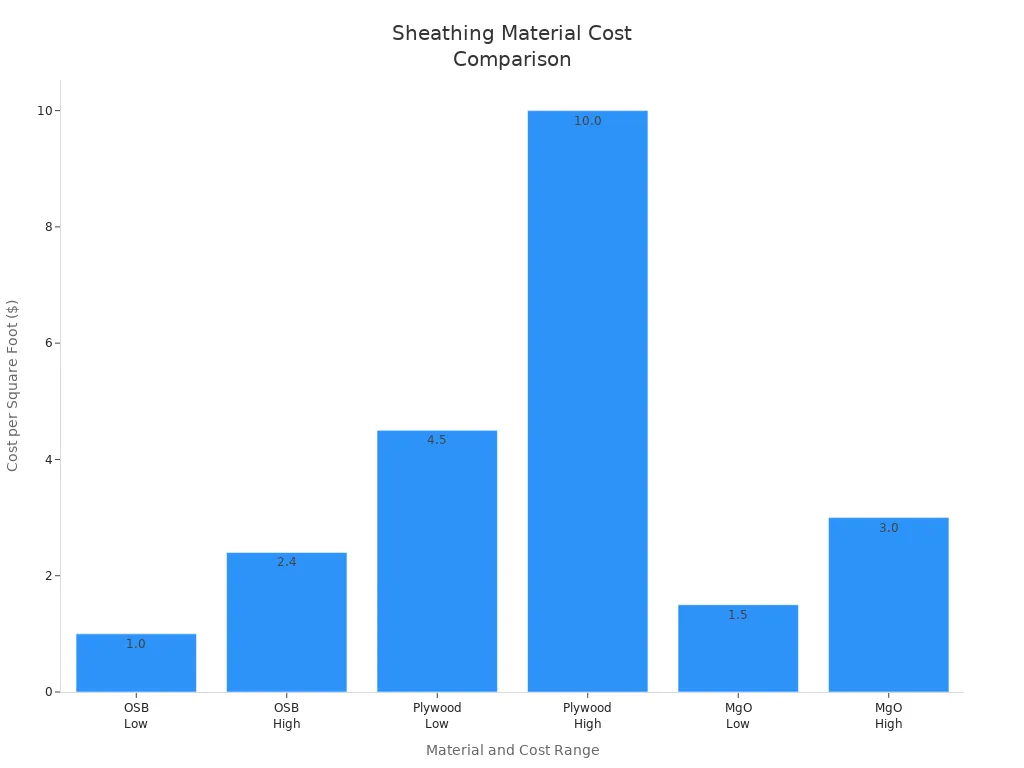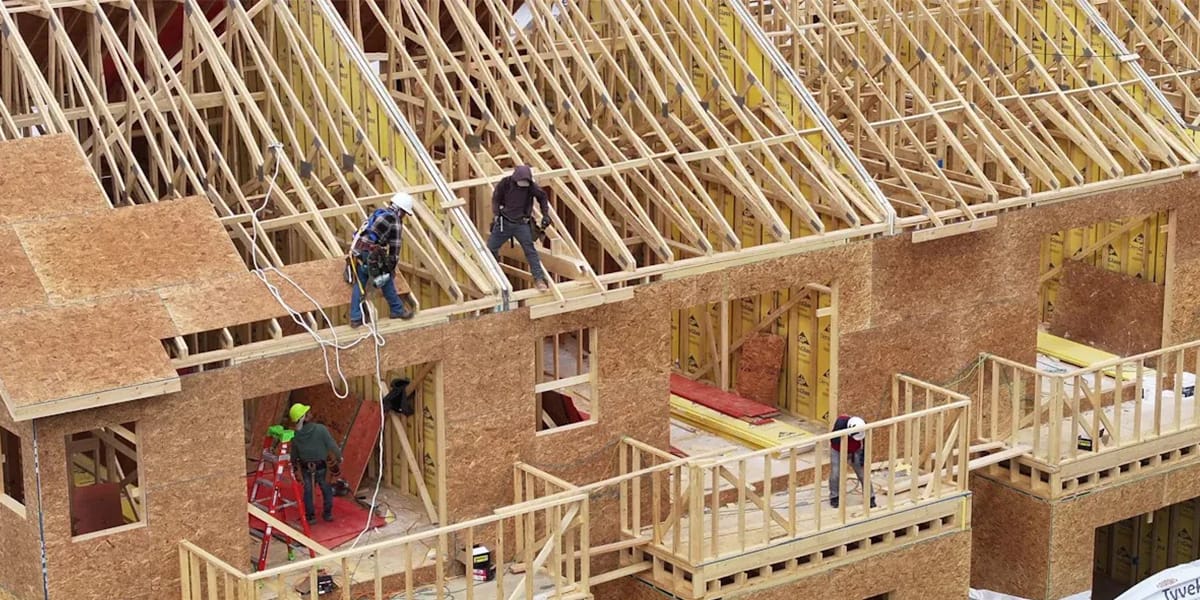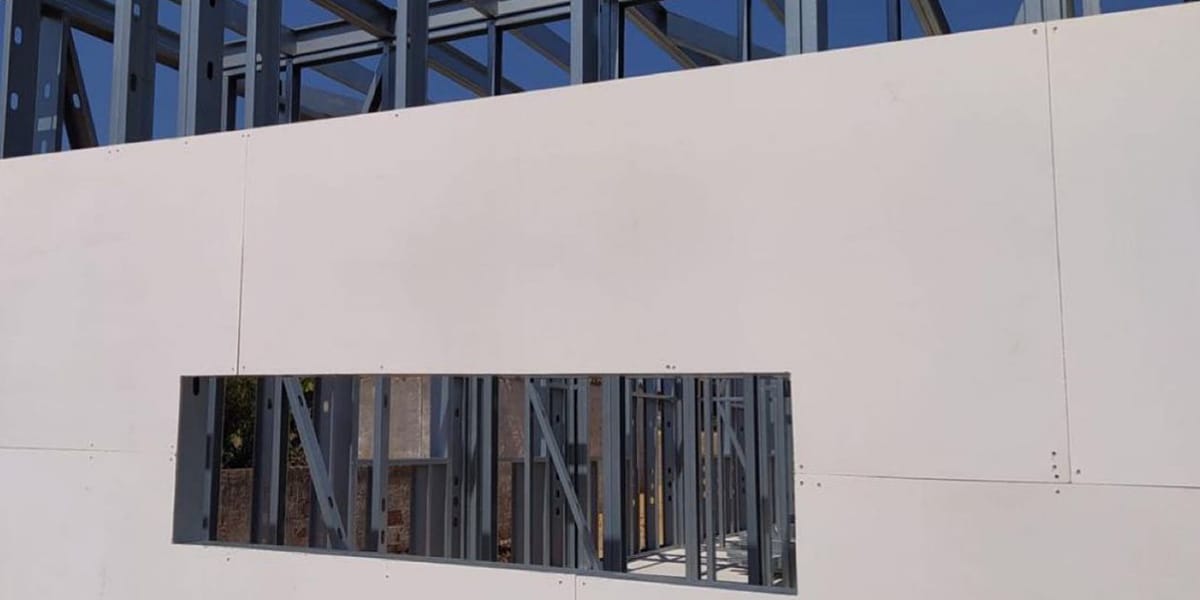
04 Aug What Is Wall Sheathing and Why Does Your Home Need It
Table of Contents
Wall sheathing is a layer that covers your home’s outside walls. You need wall sheathing because it holds the framing together. It makes the walls stronger and gives a flat surface for siding. This layer gives you many good things. It protects your home from wind and water. It helps save energy and keeps the house steady in storms. Some people think gaps in wall sheathing help air flow. But a tight and well-done system is better for comfort and strength.
Key Takeaways
Wall sheathing makes your home’s walls stronger. It also keeps out wind, water, and bugs.
You should pick the right sheathing material for your weather, money, and house needs.
If you install sheathing the right way, it stops water damage, mold, and losing energy.
Structural sheathing like plywood or OSB makes walls strong. Nonstructural types help keep heat in.
Checking and taking care of your walls often keeps them strong, dry, and saves energy.
What Is Sheathing?
Wall Sheathing Explained
When you ask, “what is sheathing,” you want to know about a layer that covers the outside of your home’s frame. Wall sheathing connects the wall studs and gives your house strength. You use it to keep the walls from twisting or bending when strong winds blow. This layer also acts as a shield, blocking rain, snow, and wind from getting inside.
Wall sheathing does more than just add strength. It helps keep out moisture and pests. It also stops air leaks, which means your home stays warmer in winter and cooler in summer. You get a solid base for siding, brick, or other finishes. Some types of sheathing even slow down fires, which adds safety for your family.
Tip: Always choose the right sheathing materials for your climate and home type. Some materials work better in wet areas, while others are best for dry or windy places.
You can see the main jobs of wall sheathing in this list:
Blocks water, air, and pests from entering.
Supports insulation to keep your home comfortable.
Acts as a base for siding or brick.
Exterior Wall Sheathing Basics
Exterior wall sheathing covers the outside of your house frame. You install it before adding siding or brick. This layer ties the wall studs together and makes the whole wall stronger. You need exterior wall sheathing to meet building codes and keep your home safe.
Building codes set rules for exterior sheathing. These rules tell you how thick the sheathing must be and how far apart you can place the wall studs. Here is a table that shows some common requirements:
Sheathing Material Type | Minimum Thickness Requirement | Maximum Wall Stud Spacing |
|---|---|---|
Diagonal wood boards | At least 5/8 inch | Up to 24 inches on center |
Structural fiberboard | At least 1/2 inch | Up to 16 inches on center |
Wood structural panels | Thickness per referenced tables | Not specified |
M-S and M-2 “Exterior Glue” particleboard | As per Section 2306.3 and related tables | Not specified |
Gypsum sheathing | At least 1/2 inch | Up to 16 inches on center |
Reinforced cement mortar | At least 1 inch | Up to 24 inches on center |
Hardboard panel siding | As per referenced table | Not specified |
You must use the right fasteners and follow the spacing rules. For example, you often need to nail or screw the sheathing every 6 inches along the edges. In areas with strong winds or hurricanes, you may need extra bracing and special connectors.
You have many types of sheathing to choose from. Some are structural, like plywood or OSB, which make the wall strong. Others, like foam board, add insulation but do not add much strength. You can also find sheathing that combines both features. The right choice depends on your climate, budget, and the kind of siding you want.
When you install exterior wall sheathing, you must follow best practices:
Place the panels with a small gap if they can swell, like OSB.
Use the right nails or screws and make sure they go into the studs.
Cover the sheathing with siding soon after to protect it from rain.
Exterior sheathing works with other parts of your home’s envelope. The cladding, air gap, and weather-resistive barrier all help keep water out and let your walls dry. Flashing around windows and doors directs water away from these openings. When you use integrated sheathing with built-in barriers, you get even better protection and fewer mistakes during installation.
Note: Exterior wall sheathing is not the same as other wall systems like SIP walls. SIP walls replace the whole wall, including insulation and sheathing, but make it harder to reach wires or pipes. Exterior sheathing lets you build in layers, so repairs and upgrades are easier.
You need to pick the right sheathing materials and install them correctly. This keeps your home strong, dry, and energy efficient for years.
Importance in Construction
Structural Support
When you build a house, you want walls that stay strong. Wall sheathing helps your home stay sturdy. You put structural sheathing like plywood or OSB on the outside of the wall frame. This layer connects all the wall studs together. It helps the house stand up to strong winds and earthquakes.
Here is how wall sheathing makes your house stronger and steadier:
Structural sheathing gives your walls more shear strength.
It helps your home not sway or bend in storms or when the ground moves.
Good sheathing keeps the frame steady and helps your home handle wind and earthquakes.
You get more than just strong walls. Structural wall sheathing is also a good base for siding and finishes. You can attach siding, brick, or other materials safely. The right sheathing makes your house much stronger against wind and earthquakes. Your home will stay safe and strong for a long time.
Tip: Always use the right thickness and fasteners for your sheathing. This gives the best results and follows building codes.
Weather and Moisture Barrier
You want your home to be dry and comfy, no matter the weather. Wall sheathing makes a layer that blocks wind, rain, and snow. This barrier stops water from getting inside your walls. It helps keep out mold and rot.
Wall sheathing with good weather resistance protects your home in many ways:
It stops wind from blowing through cracks and gaps.
It keeps rain and moisture out, especially if you tape the seams and use a weather-resistant barrier.
It works with other layers, like house wrap and flashing, to keep out water.
Tests show that walls with plywood or OSB sheathing are much better at stopping wind and water. The U.S. Department of Housing and Urban Development says to use these materials for better wind protection. If you skip good sheathing or use the wrong kind, your home can get leaks and damage in storms.
Note: Not all sheathing products protect the same way. Pick materials that fit your local weather for the best results.
Insulation and Energy Efficiency
Wall sheathing does more than make your home strong and dry. It also helps save energy. Insulated sheathing keeps warm air inside in winter and cool air inside in summer. This cuts down on drafts and lowers your energy bills.
Let’s see how wall sheathing works with different systems:
Feature | Older Methods | |
|---|---|---|
Energy Efficiency | Blocks air leaks, saves energy | Air leaks increase bills |
Durability | Strong wood, water protection | Less weather resistance |
Moisture Management | Prevents mold and water damage | Higher risk of problems |
Advanced framing with full wall sheathing lets you add more insulation between the studs. This makes your walls better at keeping heat in or out. You can also use continuous insulated sheathing on the outside. This stops heat from escaping through the frame and keeps the sheathing warm enough to stop moisture problems.
The good things about proper wall sheathing include:
Lower energy bills because there are fewer air leaks.
More comfort in every season.
Less chance of mold and moisture damage.
Higher energy efficiency ratings for your home.
When you pick the right sheathing and install it well, your home will be strong, dry, and energy efficient. These benefits make wall sheathing a smart choice for every homeowner.
Types of Wall Sheathing
 Structural vs. Non-Structural
Structural vs. Non-Structural
There are two main types of wall sheathing. One is structural sheathing. The other is nonstructural sheathing. Structural sheathing makes your home’s frame stronger. It connects the wall studs together. This helps your house stand up to wind and earthquakes. It also helps with heavy loads. Plywood and OSB are used a lot for this. They are strong and not too expensive.
Nonstructural sheathing does not make walls stronger. It helps with insulation and keeps out water. You use it to save energy and stop moisture. Foam insulation, glass mat, gypsum sheathing, and cement board are examples. Many commercial buildings use nonstructural sheathing. It helps with fire safety and blocks noise. People often use both types together for the best results.
Tip: Use structural sheathing for outside walls and places that hold weight. Add nonstructural sheathing if you want better insulation or to stop water.
Structural sheathing makes walls strong and steady.
Nonstructural sheathing helps with insulation and moisture.
Using both types gives you extra benefits.
Common Materials (OSB, Plywood, Mgo Board)
There are several common materials for wall sheathing. Each one has good and bad points. The most popular are OSB, plywood, and magnesium oxide (MgO) board.
Material | Approximate Cost per 4×8 Sheet | Cost per Square Foot | Relative Cost Compared to OSB | Notes on Durability and Use |
|---|---|---|---|---|
OSB | About $6 | $1.00 to $2.40 | Cheapest option | Affordable, widely available, but vulnerable to moisture damage |
Plywood | About $10 | $4.50 to $10.00 | About 60% more expensive | Stronger and more water-resistant than OSB, lasts longer, but higher cost |
N/A (varies) | $1.50 to $3.00 | More expensive than OSB and plywood | Superior fire and moisture resistance, durable, premium choice with higher upfront cost |

OSB is the cheapest choice. You can find it in many stores. It works for most homes. But OSB does not do well with water.
Plywood costs more than OSB. It is stronger and handles water better. Pick plywood if you want your walls to last longer.
MgO board is great for fire, water, and mold resistance. It is good for the environment and blocks sound. MgO board costs more and is harder to find.
When you choose wall sheathing, think about your weather, budget, and what you need. Each material has special benefits. Pick the one that fits your home best.
Choosing and Maintaining Wall Sheathing
Selecting the Right Material
You want your wall sheathing to last and protect your home. The best choice depends on your climate, budget, and how much maintenance you want to do. In wet or humid areas, moisture resistance matters most. Treated plywood and OSB with moisture barriers help stop water damage and mold. Fiber cement boards work well in these places because they resist water, mold, and fire. Magnesium oxide boards also stand up to harsh, moist climates and are eco-friendly.
If you want strong walls and better insulation, you can combine structural sheathing like OSB with foam board. This mix gives you both strength and energy savings. Insulated panels and foam boards have higher R-values, which means they keep your home warmer in winter and cooler in summer. These materials cost more at first but save money on energy bills and repairs later.
Here are some tips for choosing wall sheathing in high-moisture climates:
Pick materials with high moisture resistance, like fiber cement or treated plywood.
Use weather-resistant barriers to block water and air.
Think about long-term savings, not just the upfront cost.
Choose materials that match your maintenance needs. Fiber cement needs less care than wood.
Ask a professional for advice and proper installation.
Tip: Always follow the manufacturer’s instructions for how to use sheathing. This helps you get the best results and keeps your warranty valid.
Risks of Missing or Improper Sheathing
If you skip wall sheathing or install it wrong, your home can face big problems. Water can get inside and cause the panels to swell or buckle. You might see ripples in your siding or roof. Missing or poorly installed flashing lets water leak in, leading to rot and mold. Gaps around windows or pipes can also let in water and pests.
During storms or high winds, weak sheathing can fail. This puts your home at risk for serious damage. Walls may not hold up, and parts of your house could break away. Poor installation can also cause cracks, loose siding, and higher energy bills because of air leaks.
Look for these warning signs:
Blisters or bubbles on siding.
Peeling paint or wallpaper inside.
Mold or mildew on walls.
Higher energy bills.
You can prevent these problems by choosing the right materials, installing them correctly, and keeping up with regular checks and repairs.
When you pick the right materials and install them well, your home is safer. Good installation makes your house stronger and keeps water out. It also helps you save energy. These things help your house last longer and feel nicer to live in. Experts say you should always use the best methods for each step. If you improve your siding and sheathing, your home can look better and be worth more. For the best advice, ask a pro to check your walls and tell you what to fix.
FAQ
What happens if you skip wall sheathing?
You risk weak walls and water leaks. Your home may not meet building codes. Siding can fall off. Mold and rot may grow inside your walls. You may pay more for repairs later.
How do you know if your wall sheathing needs repair?
Look for signs like soft spots, bulging siding, or water stains. You may see mold or smell musty odors. If you notice higher energy bills, your sheathing may have gaps or damage.
Can you install new siding without replacing old sheathing?
You can add new siding if the sheathing stays dry and strong. If you see rot or damage, you must fix or replace the sheathing first. Always check the sheathing before starting a siding project.
What is the best sheathing for wet climates?
Fiber cement, treated plywood, or magnesium oxide board work well in wet areas. These materials resist water, mold, and rot. You get longer-lasting protection for your home.


 Structural vs. Non-Structural
Structural vs. Non-Structural